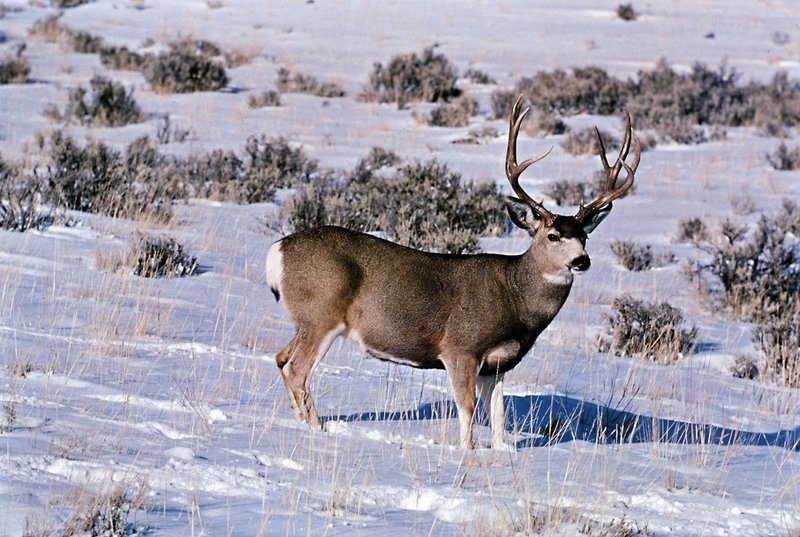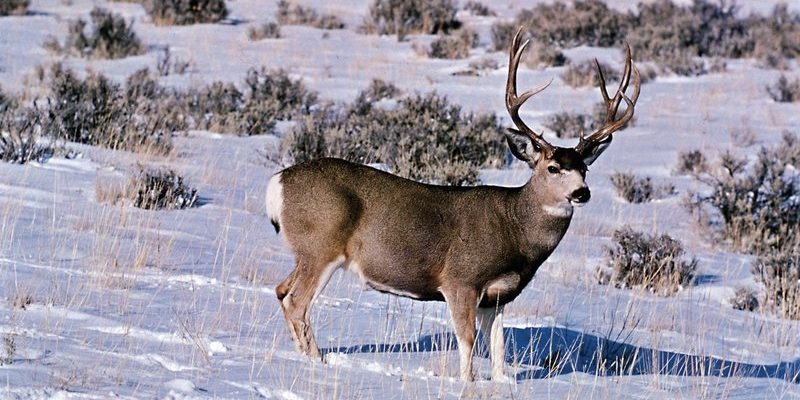
Mule deer are known for their distinctive large ears and gentle demeanor. However, like any wild animal, they can react unpredictably when they feel threatened. It’s a bit like a rabbit: cute and fluffy, but push it too hard, and you might find yourself on the receiving end of some serious kicks or bites. So, what’s the real story behind mule deer and their potential danger to humans?
Understanding Mule Deer Behavior
To grasp whether mule deer can be dangerous, we first need to understand their behavior. Mule deer thrive in various habitats, from forests to deserts. They are generally shy and prefer to keep their distance from humans. However, if humans approach too closely—especially during certain times of the year—things can get tricky.
Mule deer have a few key traits that influence how they interact with humans. They are instinctively cautious and will flee when they sense danger. But during the mating season or when protecting fawns, mule deer can become surprisingly aggressive. Imagine a mother bear defending her cubs; it’s a similar instinct. If you see a doe with her fawn, it’s best to keep a safe distance.
Additionally, mule deer have powerful back legs that they use for jumping. They can leap over obstacles with ease, and this agility can catch people off guard when they suddenly bolt into traffic or crowds. In this sense, their danger often lies more in sudden movements than outright aggression.
When Can Mule Deer Be Dangerous?
There are specific situations where mule deer can pose a greater threat to humans. One of the most common scenarios is during the rut, or mating season, which typically occurs in late fall. During this time, male mule deer can become territorial and more willing to confront perceived threats. If a human gets too close to a competing male, the deer may see them as an intruder.
Another critical time is when does are protecting their young. Fawn season usually peaks in late spring and early summer. A mother may feel threatened if you get too close to her fawn. It’s that protective instinct kicking in; she’s not trying to be rude, but she’ll defend her baby fiercely.
Lastly, mule deer can be dangerous when they’re startled or cornered. If a deer feels trapped and has nowhere to escape, it may charge at the perceived threat. So, if you ever come across a mule deer in the wild, keep calm and back away slowly. It’s a simple rule that can keep both parties safe.
Accidents and Collisions
Mule deer are not just a concern in face-to-face encounters; they can also be involved in dangerous accidents, particularly on highways. These animals are more active during dawn and dusk, which is when many drivers are on the road. This timing leads to a higher possibility of deer-vehicle collisions.
In fact, thousands of these accidents happen each year, sometimes resulting in serious injuries or fatalities. The deer can dart into traffic quickly, and if drivers aren’t alert, the results can be disastrous. Many regions take measures to reduce these incidents, like deer crossing signs and fencing along major roadways.
To minimize risks while driving in deer-populated areas, stay vigilant, especially during those early morning and evening hours. Reducing speed and being prepared to stop can make a big difference. Remember, deer might not be actively looking for trouble, but a sudden encounter can lead to chaos.
How to Safely Observe Mule Deer
If you’re lucky enough to spot mule deer in the wild, enjoying their beauty doesn’t have to be dangerous. Observing wildlife from a distance is the best way to appreciate these creatures while ensuring your safety and theirs. Here are some key tips:
- Keep Your Distance: Use binoculars or a zoom lens on your camera to get close-up views without getting too near.
- Stay Quiet: Deer are easily startled. Keep your voice low and avoid sudden movements.
- Avoid Feeding: Don’t attempt to feed deer; it can habituate them to humans and lead to dangerous encounters down the line.
- Watch for Signs: Look for signs of aggression, like a deer stamping its feet or snorting, and back away if it seems agitated.
Let’s not forget that these animals are wild, and they deserve the same respect we give to other creatures. The thrill of spotting a mule deer can turn into a troubling situation if common rules of respect and distance aren’t followed.
What to Do If You Encounter a Dangerous Mule Deer
Should you find yourself face-to-face with an aggressive mule deer, what’s the best course of action? Here’s a breakdown of steps you can take to ensure your safety:
1. Stay Calm: Panicking can escalate the situation. Take deep breaths and keep your movements slow and steady.
2. Give Space: Back away slowly and avoid making direct eye contact, as this can be perceived as a challenge.
3. Create Distance: If possible, get behind an object such as a tree or car. This barrier can protect you and might help the deer feel less threatened.
4. Yield the Area: If the deer continues to approach, allow it space to leave. The less pressure you put on it, the more likely it is to move away.
5. Report Aggressive Behavior: If a deer is acting aggressively toward people or pets, reporting it to local wildlife authorities can help keep others safe.
By knowing what to do, you can protect yourself and the deer in these tense situations.
While mule deer are not inherently dangerous, they can become unpredictable under certain circumstances. Understanding their behavior and knowing how to react reduces the likelihood of negative encounters. Remember, a healthy respect for wildlife, including these stunning animals, is crucial. Whether you’re driving through their habitats or enjoying a hike in their territory, being aware of their potential for danger—and how to handle it—will ensure everyone can coexist peacefully.
So, the next time you see a mule deer, admire its beauty from a distance, and remember that while they might look gentle, they’re still wild at heart. It’s all about keeping that dance between humans and nature in perfect harmony.

